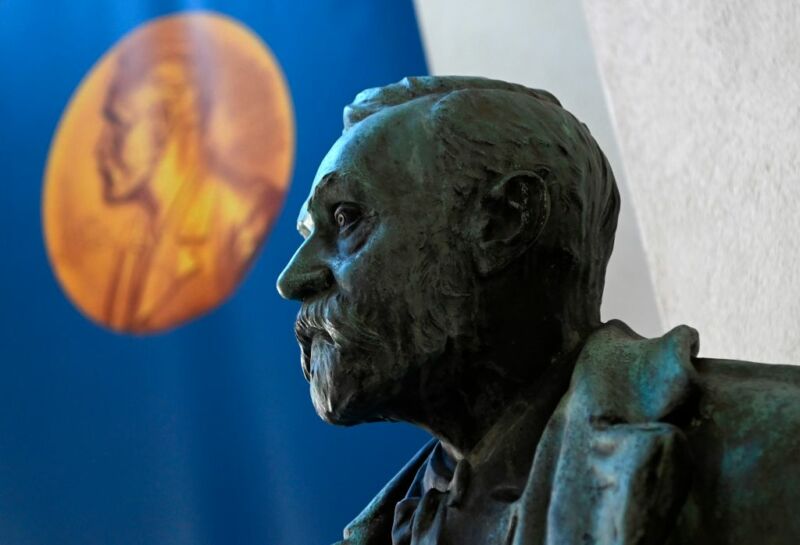A decades-long struggle to find a virus wins the Nobel

Enlarge / This photograph of a bust of Alfred Nobel was taken just prior to the announcement of the winners of the 2020 Nobel Prize in Physiology or Medicine at the Karolinska Institute in Stockholm, Sweden, on October 5, 2020. (credit: JONATHAN NACKSTRAND / Getty Images)
The first known human cases of COVID-19 occurred in December 2019. About a month went by before the virus was identified and its complete genome sequence was identified. This year's Nobel Prize in Physiology or Medicine honors a 25-year-long struggle to identify the virus we now know as hepatitis C.
The ABCsThe hepatitis viruses are a bit confusing. There are now five of them known, and while they're united by their ability to attack the liver, they're very different in most other ways. The most significant of the viruses are hepatitis A, hepatitis B, and hepatitis C, and they're caused by three largely unrelated viruses-some even differ in their genetic material, using DNA versus RNA-with very different properties.
One of the first differences recognized by the medical research community was how the viruses spread. Hepatitis A infections can start due to contaminated water or food; in contrast, B and C are typically spread through contaminated blood or needles, making them a threat to the blood supply. The hepatitis A virus was the first identified, leaving researchers focused on the bloodborne B and C. B was the next identified, which is when this year's Nobel Laureates enter the picture.
Read 9 remaining paragraphs | Comments